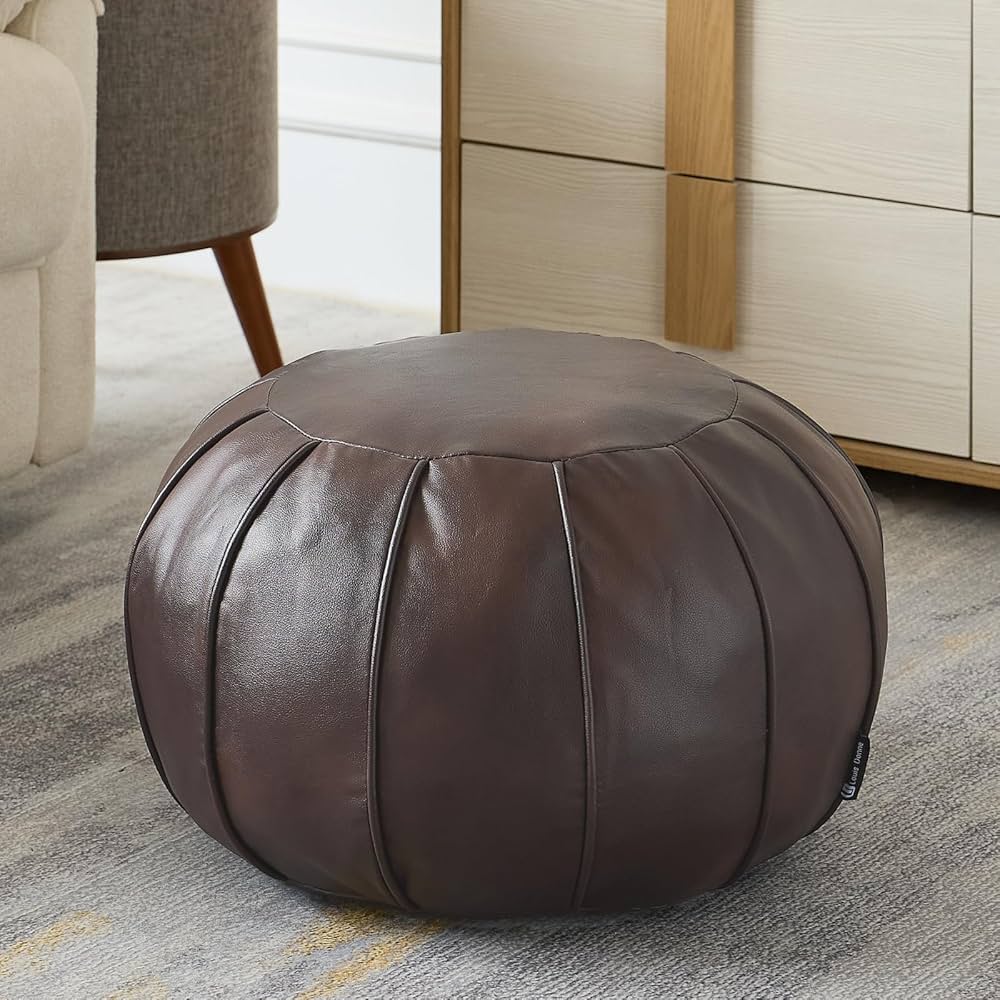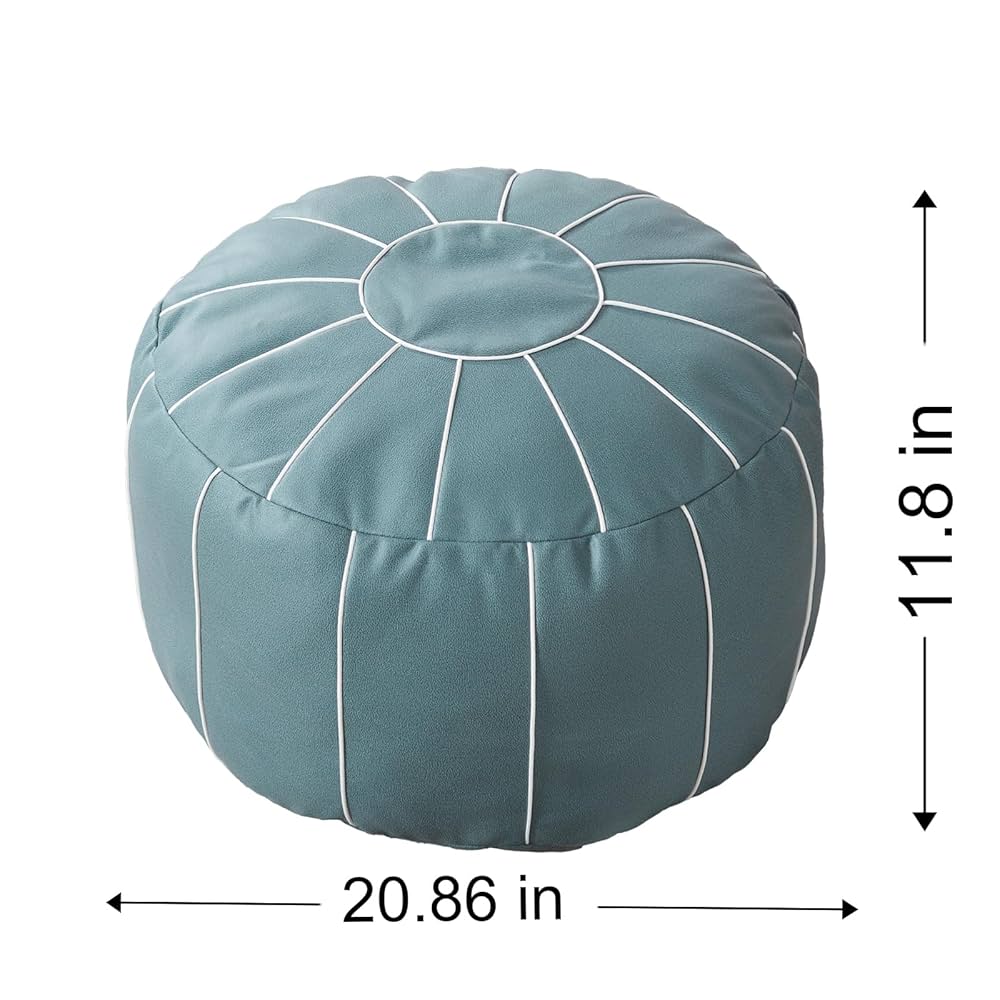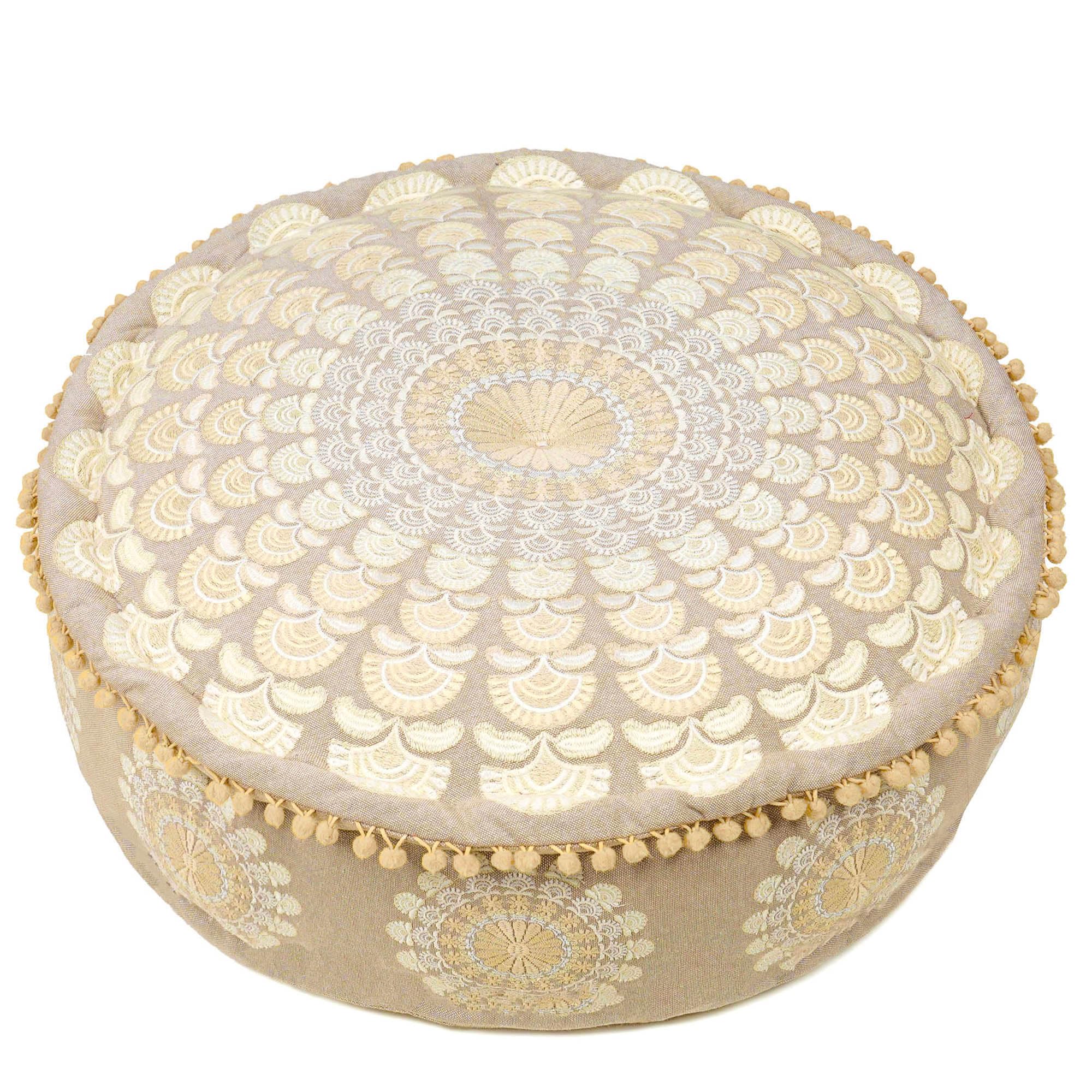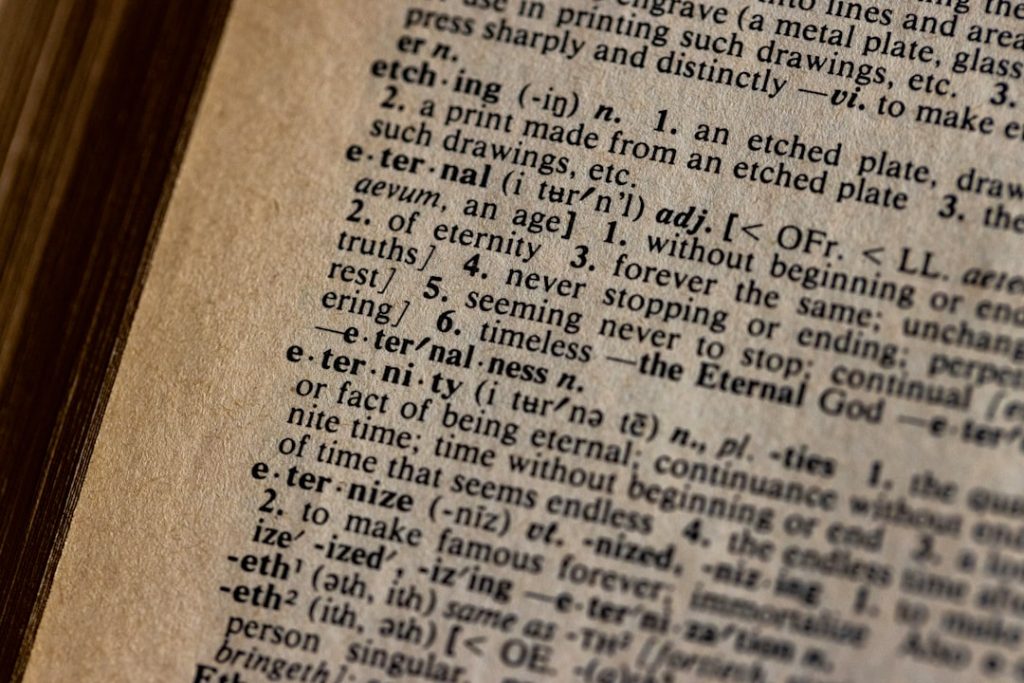Have you ever come across the word “Le Pouf” and wondered what it means in English? If so, you’re not alone.
This simple phrase might seem mysterious at first, but understanding it can add a touch of style and comfort to your home or conversations. Keep reading, and you’ll discover the true meaning of “Le Pouf” and why it’s more than just a word—it’s a little piece of everyday luxury you’ll want to know about.
Your curiosity is about to pay off!

Credit: www.amazon.ca
Origins Of Le Pouf
Understanding the origins of Le Poufgives you a clearer picture of its meaning and significance. This term is not just a random word; it carries layers of history and culture that shape how you perceive it today.
French Language Roots
The word “pouf” comes from French, where it originally described a type of padded cushion or low seat. In everyday French, it can refer to a soft, often round piece of furniture used for sitting or resting your feet.
The term also has a playful sound, almost like an onomatopoeia, mimicking a light puff or a soft explosion. This reflects how language often captures not only meaning but also the feel or sound of the object it describes.
Cultural Context
In French culture, le poufisn’t just a piece of furniture—it can symbolize comfort, relaxation, and casual living. You might find it in homes that value cozy, informal spaces where people can gather easily.
Interestingly, the word has taken on other meanings in different contexts, sometimes referring to hairstyles or even slang. This shows how language evolves based on social trends and cultural shifts.
Have you ever noticed how certain words change meaning when you move from one culture to another? Le Poufis a perfect example of how language and culture are deeply connected, shaping how we understand everyday things.
Literal Translation
Understanding the literal translation of “Le Pouf” helps you grasp its basic meaning before diving into cultural or contextual uses. Literal translation breaks down the phrase word-by-word, which can clarify what the words originally mean in English. This approach gives you a clear starting point to appreciate how the term fits into everyday language.
Direct English Equivalent
The phrase “Le Pouf” directly translates to “The Pouf” in English. “Le” means “The,” which is a definite article used to specify something particular. “Pouf” refers to a soft, cushioned piece of furniture, similar to a small ottoman or footstool.
Imagine walking into a living room and spotting a round, plush seat without legs—that’s a pouf. While the word itself is borrowed into English, it keeps the same sense of a cozy, casual seat. Knowing this direct equivalent helps you identify the object if you see it in French stores or design catalogs.
Common Usage
In everyday French, “Le Pouf” often describes the same cushioned seat you might find in trendy home decor. However, be aware that in informal or slang contexts, “pouf” can carry very different, sometimes negative meanings.
Have you ever noticed how some words change meaning based on tone or setting? That’s true here. While the literal meaning is neutral and practical, the word’s usage can shift, so context matters a lot when you hear or read “Le Pouf.”
Different Meanings In Context
Le Pouf means a soft, cushioned seat in English. It can also refer to a hairstyle or a light, fluffy object depending on context. Understanding the situation helps find the right meaning.
Understanding the term “Le Pouf” can be quite intriguing due to its varied meanings in different contexts. It’s not just a simple translation from French to English but a term that has evolved across cultures and settings. This section will delve into the informal and slang interpretations and the regional variations that give “Le Pouf” its unique identity.Informal And Slang Interpretations
In informal settings, “Le Pouf” might refer to a type of furniture—specifically, a cushy, round seat without arms or a back. Imagine walking into a cozy living room and seeing a pouf, inviting you to relax. It’s a versatile piece of furniture, often used as a footrest or extra seating. However, in some informal and slang contexts, “Le Pouf” can take on a different flavor. In certain circles, it might be used to describe someone with a flamboyant or over-the-top style. This usage often carries a playful or teasing tone, highlighting how language can adapt and evolve with trends.Regional Variations
The meaning of “Le Pouf” can change dramatically depending on where you are. In France, it’s primarily associated with the furniture piece. Yet, cross the Channel to the UK, and you might hear it used to describe a hairstyle with volume—think of the classic ’60s bouffant. Even within English-speaking countries, you might encounter various interpretations. If you’re in a region where French culture has a significant influence, the term might retain its original essence. But in others, it could be a slang term you’d hear among friends. This diversity in meaning makes language rich and engaging. Have you ever encountered a term that meant one thing in your town but something entirely different elsewhere? This is the beauty of language—it connects us while allowing for regional uniqueness.Le Pouf In Popular Culture
Le Pouf in Popular Culturehas become more than just a French term translating to “the puff” or “the pouffe.” It has gained a spot in various cultural areas, influencing media, fashion, and lifestyle trends. Understanding its role in popular culture shows how a simple word can carry style and meaning beyond language.
References In Media
Le Pouf appears in movies and TV shows to symbolize elegance or a certain playful charm. It often describes a fluffy hairstyle or a soft piece of furniture, instantly evoking a visual image. Have you noticed characters in period dramas sporting voluminous “poufs” that highlight their status or personality?
Animated series and cartoons sometimes use the term to describe exaggerated hairdos, making it a fun way to connect with audiences. This use keeps the word alive and relatable, sparking curiosity about its origins and meaning.
Fashion And Lifestyle
In fashion, Le Pouf refers to a style that adds volume and softness—think of puffed sleeves, poufy skirts, or even accessories like cushioned bags. Designers use it to create pieces that stand out and feel comfortable at the same time.
In lifestyle, poufs have evolved into popular furniture items—soft, round cushions or ottomans that add a cozy touch to any room. Have you ever wondered why these pieces feel inviting? It’s the perfect blend of style and comfort, showing how the concept of “Le Pouf” enhances everyday living.
How To Use Le Pouf Correctly
Using the phrase le poufcorrectly can make a big difference in how you’re understood, especially in conversations involving French culture or language. It’s not just about knowing the translation; it’s about placing it in the right context and tone. Misusing it might lead to awkward moments or confusion, which nobody wants.
Appropriate Situations
Le pouftypically refers to a soft, cushioned seat, like a small ottoman or footstool. Use it when talking about furniture or interior design. For example, you might say, “I added a le pouf to my living room for extra comfort.”
You can also use it in casual conversations about home decor or when describing seating options. It fits well in informal settings or friendly chats. Using it while discussing a modern or cozy space is a great way to sound natural and informed.
Avoiding Misunderstandings
Be careful because le poufcan have different meanings in slang or informal language. In some contexts, it might be seen as a derogatory term, so always consider your audience before using it.
If you’re unsure, clarify your meaning by adding details. For example, say “le pouf, the small seat” to avoid confusion. Asking yourself, “Will my listener understand this as furniture, or could they think otherwise?” helps keep your message clear.
When speaking with native French speakers, pay attention to their reaction. If they seem puzzled or uncomfortable, it might be a sign to switch wording. Using simple and clear phrases ensures your communication stays smooth and respectful.

Credit: www.amazon.ca
Similar French Terms
When you come across the French word le pouf, you might wonder if there are other terms that carry a similar meaning or vibe. French, rich with nuance, offers a variety of words that share related ideas, either in furniture or in informal language. Understanding these can help you grasp the context better and even add flair to your vocabulary.
Words With Related Meanings
Several French words relate closely to le pouf, especially in the world of furniture and casual speech. For instance:
- Le fauteuil– This means an armchair, typically larger and more structured than a pouf.
- Le coussin– Translates to cushion or pillow, often used on chairs or sofas.
- Le tabouret– Refers to a stool, usually without a backrest, differing from the soft and plush pouf.
- Le canapé– Means sofa, a larger seating option compared to a pouf’s compact size.
Each word points to a piece of furniture but with subtle differences in size, function, and comfort. When you picture a pouf, think soft, round, and versatile, often used as a footrest or extra seat.
Comparing Usage
How you use these words varies by context. Le poufoften appears in casual settings or modern home decor conversations. It’s informal and cozy, unlike le fauteuil, which might be mentioned in a formal living room setup.
In everyday speech, you might hear someone say, “Je m’assois sur le pouf,” meaning “I’m sitting on the pouf,” signaling something comfortable and easygoing. Meanwhile, “Je préfère le fauteuil” suggests a preference for a more structured seat.
Have you noticed how context changes the feel of a word? Try using these terms next time you describe your living space or furniture shopping. It might just make your French sound more natural and vivid.

Credit: www.amazon.ca
Frequently Asked Questions
What Does “le Pouf” Mean In English?
“Le Pouf” translates to “the pouf” or “the ottoman” in English. It refers to a low, cushioned seat often used as footstool or extra seating in homes.
Is “le Pouf” Used In Interior Design?
Yes, “Le Pouf” is popular in interior design. It adds style and comfort while serving as versatile furniture in living spaces.
How Is “le Pouf” Different From A Regular Chair?
A pouf is smaller, softer, and often without legs. It serves as a casual seat or footrest, unlike a structured chair.
Can “le Pouf” Mean Something Else In French?
In French slang, “pouf” can be a derogatory term. However, in furniture context, it strictly means a soft, cushioned seat.
Conclusion
Le Pouf means a soft, cushioned seat in English. It is often used to describe a small, comfortable stool or ottoman. People use poufs to add style and comfort to their rooms. Knowing this word helps you understand home decor better.
Simple words can open new ideas. Now, you can recognize and use “Le Pouf” with ease. It’s a small word with a big place in furniture. Keep learning new words and enjoy the journey.





